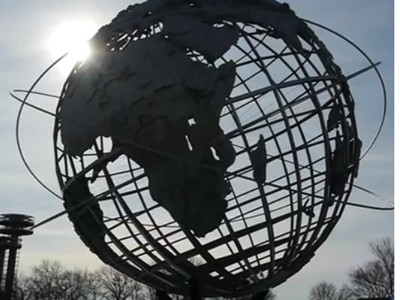The Post2009 Global Housing Bubble or Housing Bubble 2 0
Post on: 17 Июнь, 2015 No Comment

By Jesse Colombo (This article is frequently updated)
After the cataclysmic mid-2000s housing bubbles in the U.S. and European PIIGS nations, one would think that the world would never allow another housing bubble to rear its ugly head again. Unfortunately, this thinking is completely wrong. Since 2008, the world has openly embraced new housing bubbles with astounding vigor, in complete defiance of all lessons taught by the Global Financial Crisis. A series of new housing bubbles have inflated in practically every country outside of deflation-prone Japan, the U.S. and PIIGS nations – Ive named this bubble The Post-2009 Global Housing Bubble or Housing Bubble 2.0 . These new housing bubbles are located in China, Canada, Australia, emerging market countries and northern & western Europe.
Here are the worlds latest housing bubbles:
Chinas Housing Bubble
Chinas housing bubble is just one aspect of the countrys overall bubble economy of the past several years. While China had a housing bubble as early as 2008. it briefly deflated during the Global Financial Crisis until the country launched a massive $586 billion economic stimulus program to help bolster the economy. Chinas stimulus plan was successful at staving off an economic crisis– so successful that inflation, overheating and overbuilding quickly became a concern again as the newly printed stimulus money sloshed around the economy, creating very alarming distortions and speculative activity.
Chinas blazingly fast economic growth coupled with an expanding credit bubble and fresh sloshing stimulus money created the perfect conditions for inflation, which has manifested in the form of soaring rents. food prices and wages. High inflation, negative real interest rates and limited investment options encouraged many Chinese to buy real estate to protect their savings from the ravages of inflation. helping to reflate the housing bubble that first reared its ugly head in 2008. Housing prices soared 140% higher nationwide from 2007 to 2011 with Beijing housing up 800% since 2003. Clearly having learned nothing from the disastrous US housing bubble, real estate speculators or flippers have taken China by storm, buying real estate as if they were buying vegetables, such a housewife who bought 10 properties within 30 minutes and the college student who flipped an astounding 680 flats .
Canada is experiencing a classic bubble economy that is driven by a commodities export boom (which is part of the commodities bubble ) a massive housing bubble that is larger than the U.S. housing bubble was at its peak, a consumer debt bubble and global hot-money investment inflows. Canadas bubble economy is driving a U.S. export boom that has helped the U.S. economy recover from the Great Recession – this is just one of the many reasons why the U.S. recovery is actually a bubblecovery.
Canadas housing bubble is now nearly 40% larger than Americas bubble at its 2005 peak. Price-to-rent ratios, a common real estate valuation measure, are flashing clear warning signs of a bubble as well. Even the IMF is warning of a Canadian housing bubble (but seems to understate the extent of the bubble and its risks as official organizations tend to do). Vancouver homes are now pricier than NYC homes, thanks partly to Chinese investors. $1,050,000 will only buy a tiny house that is merely livable in Vancouver, where median real-estate prices are an astounding 9.5 times median household income .
Australia, similar to Canada, has a bubble economy that is driven by the export of commodities to China, a housing bubble that surpasses the U.S. housing bubble in severity, a household debt bubble and global hot money investment inflows.
Australias housing bubble, like its cousin Canadas bubble, has grown larger than Americas housing bubble in its heyday and is driven by a huge boom in mortgage debt as bubble-blind investors, realtors and economists strongly believe that Australian property prices have reached a permanently high plateau (a very typical belief during bubbles). A researcher recently showed how bubble-denying Australian property investors believe in four key myths to convince themselves that the property market boom is different from the U.S. and other nations 2000s property bubbles that ended disastrously.
The Emerging Markets Housing Bubble:

Chinas economic boom and now bubble has caused commodities prices to soar – along with the fortunes of natural resource-rich emerging market nations. Investors have clamored to invest in emerging markets in recent years (now including nations that are not commodities exporters) and their hot-money has inadvertently resulted in overheating economies and property bubbles throughout the entire emerging world. Soaring asset prices and rapid credit growth has created an emerging market luxury goods boom that has bolstered the fortunes of European luxury brands a main reason why Europes economic crisis is not far worse than it is now.
(Note. the charts below are just a small selection of the many emerging market countries that have housing bubbles.)
Hong Kongs Housing Bubble
South Koreas Housing Bubble
The Post-2009 Northern & Western European Housing Bubble
(Note. the charts below are just a small selection of the many northern and western European countries that have housing bubbles.)














